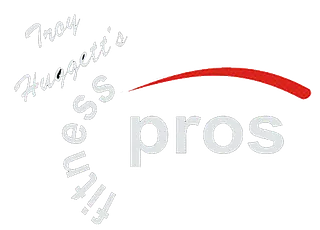06/05/2019 by troyhuggettsfitnesspros 0 Comments
Are You 1 In 20 Million?
Do you experience numbness, tingling, or dead-spots in the legs & feet? How about burning or jabbing pains or extreme sensitivity to touch? Do you feel disconnected causing unsteadiness or balance issues? lf you do, you’re part of the 20 million club of American Peripheral Neuropathy (PN) sufferers.
What causes PN – The list includes, but is not limited to:
Injury or sudden trauma, Repetitive stress, Small vessel disease, Autoimmune diseases, Kidney disorders, Cancers, Neuromas, Infections, Medication toxicity, Heavy alcohol use, Environmental or industrial toxins, and Metabolic and endocrine diseases. The largest contributor to PN is Diabetes. Roughly 60-70% of diabetics have mild to severe forms of nervous system damage that can affect sensory, motor, and autonomic nerves and contribute to various conditions including PN. In diabetic neuropathy, nerve damage occurs in an ascending pattern. The first nerve fibers to malfunction are the ones that travel the furthest from the brain and the spinal cord. Pain and numbness often are felt symmetrically in both feet followed by a gradual progression up both legs. Later, the fingers, hands, and arms may become affected.
While diabetes is one of the largest causes of PN, the actual reason a person suffers from this condition is not the most important thing to them. No, their number one interest is how to reduce or eliminate the pain and other debilitating symptoms of PN.
How do you treat the condition? The main focus in treating PN is to address any contributing causes such as infection, toxin exposure, medication-related toxicity, vitamin deficiencies, hormonal deficiencies, autoimmune disorders, or compression that can lead to neuropathy. Peripheral nerves have the ability to regenerate axons, as long as the nerve cell itself has not died, which may lead to functional recovery over time. Correcting an underlying condition often can result in the neuropathy resolving on its own as the nerves recover or regenerate.
Many pharmaceutical products are used in the treatment of PN. Pharmaceuticals provide a two-prong approach. First, they focus on managing the condition that is the underlying cause. For example, if you suffer from diabetes, you will be prescribed a medication or medications which are designed to lower your blood sugar to a point within the recommended safe range. By maintaining the blood sugar within the recommended ranges, the damage to the body can be slowed and possibly reduce further damage to the body. The second use of pharmaceuticals is directed at managing the pain, tingling, etc. Medications that are used for chronic neuropathic pain fall under several classes of drugs: antidepressants, anticonvulsant medications, antiarrhythmic medications, and narcotic agents. While this approach can be effective in managing pain, many negative side effects come with these medications. If there is no other way to achieve benefits, the risk may be worth it to an individual. However, if there is a side effect free technology alternative, would you want more information?
There is a technology that offers relief of discomfort, with no known side-effects. The technology is known as Physical Vascular Therapy. This specialized treatment utilizes electrical wave frequencies to increase pumping action at the microcirculation level. This allows the body to eliminate more metabolic waste and increase oxygen and nutrition to the cell, allowing the body to function more efficiently. This technology is not a disease specific treatment, rather it targets the microvascular system of the circulatory system. Therefore, it is effective in treating any condition which can benefit from increased blood and oxygen supply!
Contact Troy Huggett at 269-967-6300 or info@fitnessprosbattlecreek.com for more information.

Comments
Leave a comment